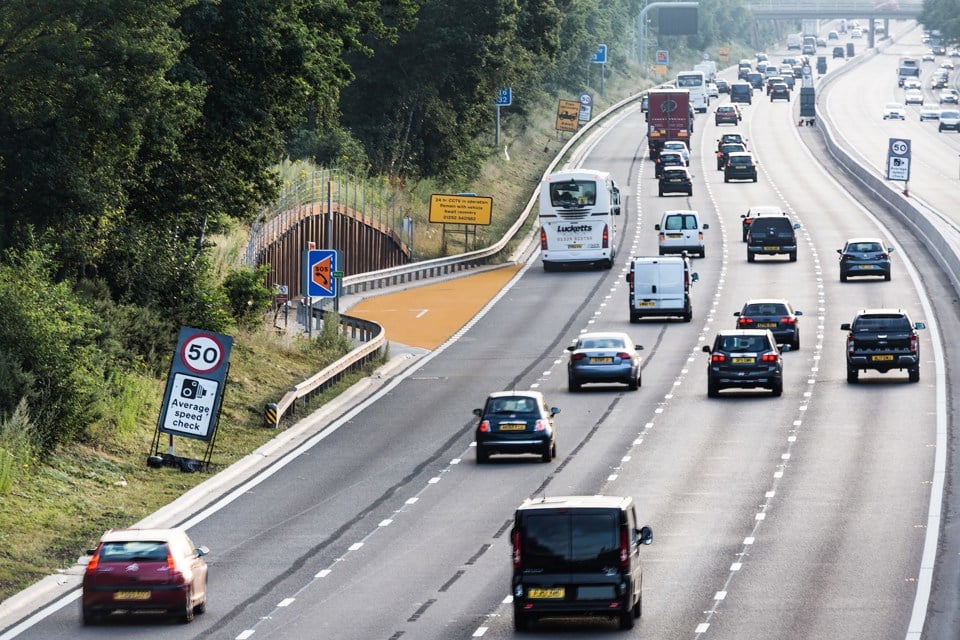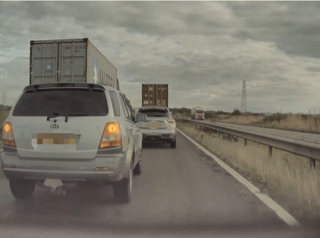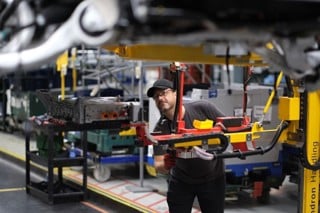All existing ‘smart’ motorways should be scrapped, or future governments will have another ‘Post Office-type’ scandal on their hands, according to the AA.
The motoring organisation says abolishing smart motorways is supported by 81% of drivers and a major plank of its manifesto.
The Prime Minister, Rishi Sunak, announced in April 2023, that the Government was cancelling any new schemes following safety concerns.
New smart motorways – including 11 that had already been paused and three new schemes – were ditched.
Seven of the 14 projects were going to involve converting stretches of motorway into ‘all-lane running’ roads where the hard shoulder is permanently removed.
The Government said that they would remain as ‘dynamic’ smart motorways where the hard shoulder can be opened as an extra lane during busy times.
National Highways is responsible for the existing 193 miles of ‘all lane running’ smart motorways and the 63 miles of smart motorway with a dynamic hard shoulder - where the hard shoulder is used as a traffic lane when it is busy.
In its latest stocktake, National Highways accepted that the risk of a collision and the risk of a serious injury or death due to a stopped vehicle collision is lowest on conventional and controlled motorways, which have hard shoulders.
AA president, Edmund King, argues that the smart motorway “experiment” has failed.
“Politicians need to stand up and be counted,” he said. “There is no great love for smart motorways and the vast majority want them scrapped.
“Despite all the hundreds of millions of pounds being spent to retrofit and try to justify a flawed concept, now is the time for a radical change. Drivers do not trust smart motorways.”
On the all lane running sections, the AA wants to reinstate the hard should with a Red X and new lane markings. This would bring them in line with the dynamic hard shoulder sections.
The objective would be on all these stretches for the hard shoulder to be in place permanently, but the technology (overhead gantries and Red Xs) still would give the opportunity to open this lane to traffic in exceptional circumstances.
The safety advantage is that there would be fewer live lane stops and keeping the emergency areas and overhead technology adds an extra layer of safety, says the AA.
These stetches would then become controlled motorways.
Controlled motorways with hard shoulders and overhead technology are among the safest roads with reduced live lane stops and incidents.
Controlled motorways and dynamic hard shoulder motorways have lower rates for those killed or seriously injured.
An FOI request found that on a smart motorway stretch of the M25 ‘near misses’ had increased 20-fold comparing five years before the smart motorway opened and five years after.
The AA says that you are twice as likely (40%) to break down in a live lane on an all-lane running smart motorway than on a conventional motorway (20%).
Since their introduction, the risk of collisions involving a vehicle stopped in a live lane has increased, it argues.
King continued: “The answer should be reinstating the hard shoulder, and this should be the aim of every political party if politicians really want to promote motoring-friendly policies. It will be safer and much smarter.
“If not, history suggests future governments will have another ‘Post Office-type’ scandal on their hands, as politicians and civil servants knew from the outset that lives would be put at risk by removing the hard shoulder and putting in inadequate emergency areas.”
Critics argue by giving back the hard shoulder, one third of capacity could be lost. However, the AA says that this is not the case.
Currently, smart motorways are not really alleviating congestion as more than one third of drivers don’t use the inside lane as they are petrified there may be broken down vehicles ahead, it says.
In addition, the AA said that any incident on smart’motorways causes severe congestion by closing lanes, slowing traffic, and delaying the emergency services getting through to crashes which again puts lives at risk.
Figures from the Department for Transport (DfT) show that average speeds on motorways and strategic roads were slower in 2023.
The AA claims that smart motorways were designed as a cost-cutting measure to increase capacity even though it was known at the time and subsequently that there would be greater safety risks.
Subsequent governments have glossed over these findings, it says.
Several coroners have indicated and warned that ‘future deaths will occur unless action is taken’.
National Highways defended the safety record of smart motorways last month, saying that they were the country’s “safest roads”.
Speaking at the time, operational control director at National Highways, Andrew Page-Dove, said: “Safety is our highest priority and our motorways are statistically some of the safest in the world, but there is still work to do as every death is a tragedy and every serious injury a life changed.
“We need to help everyone feel confident when using smart motorways.”

























Login to comment
Comments
No comments have been made yet.